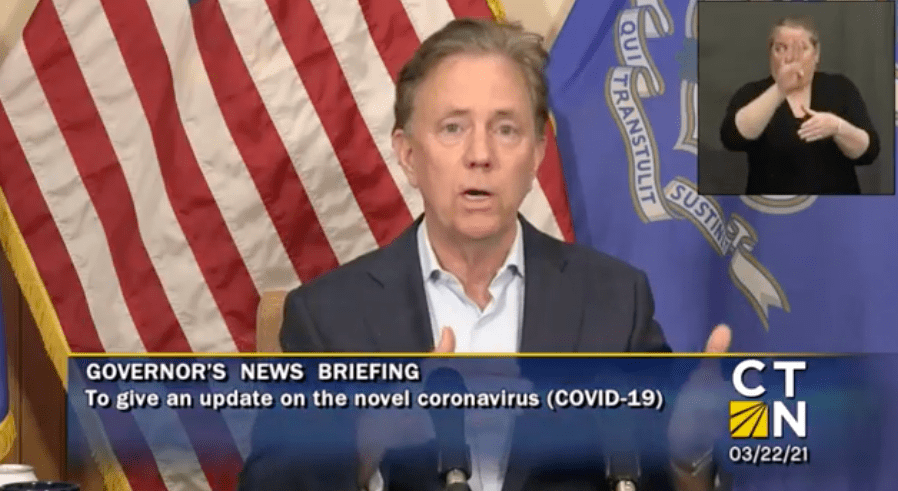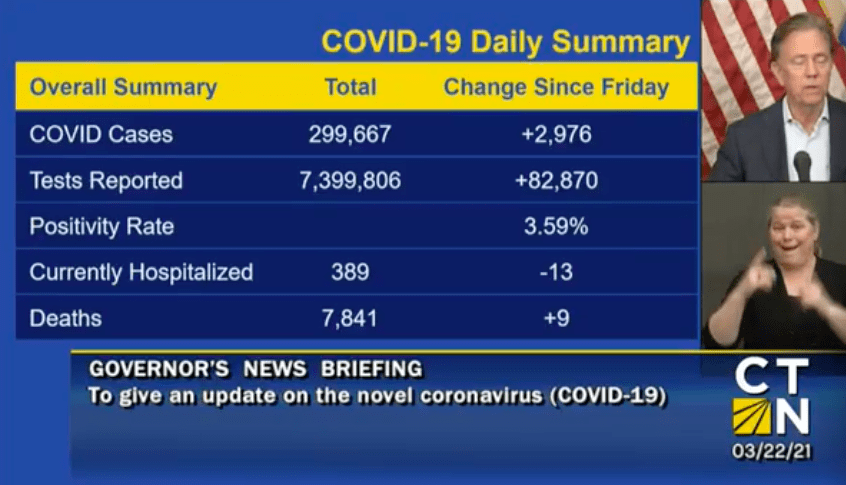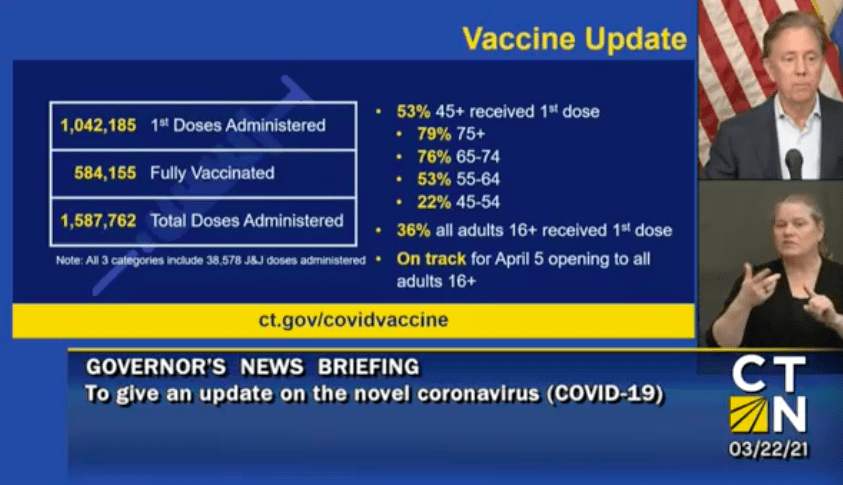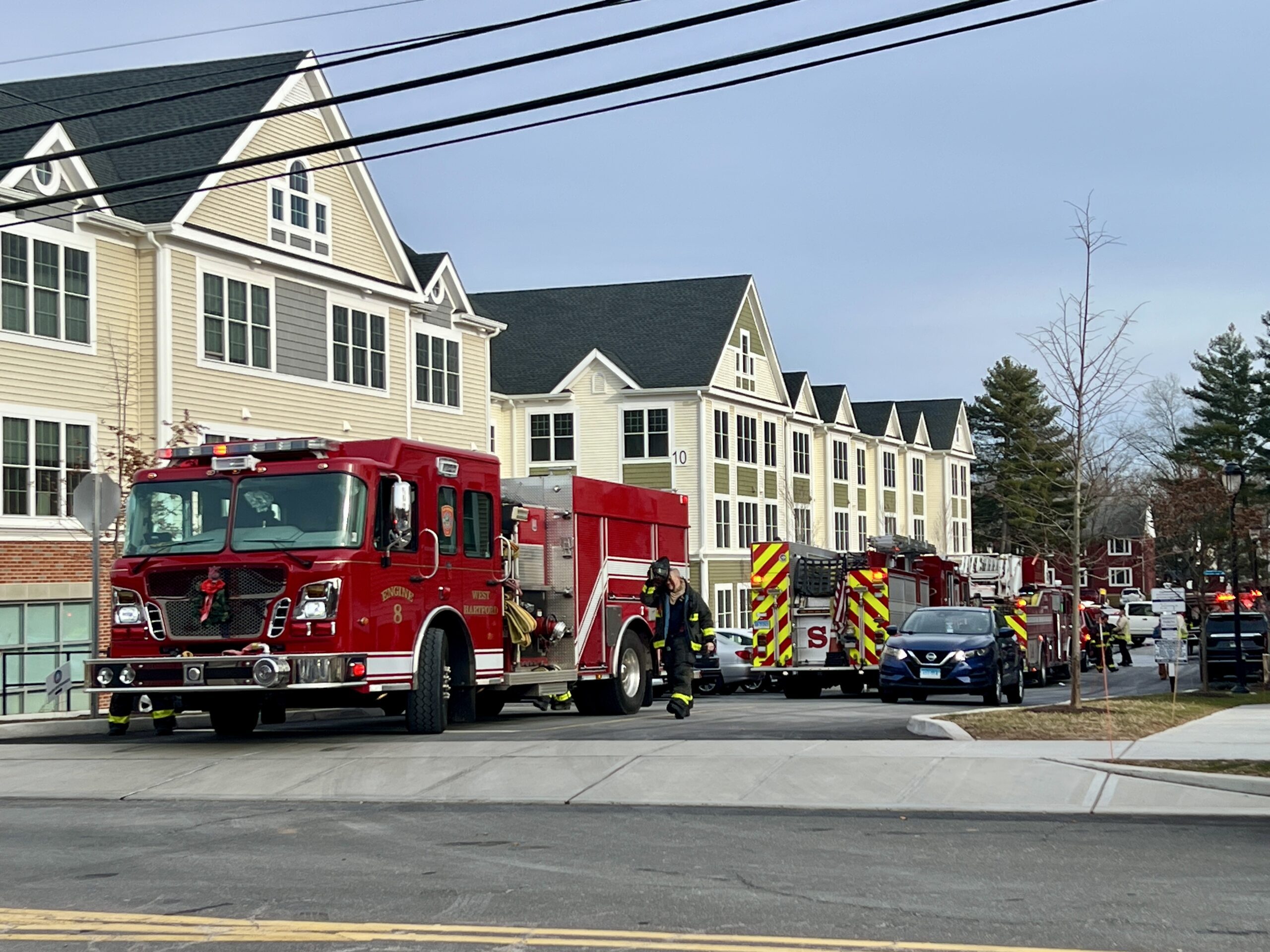Connecticut Sees New COVID Variant on the Rise

Audio By Carbonatix

Statewide there have been 283 cases of the B.1.1.7 variant identified as of last Thursday, just one of which was in West Hartford.

Screenshot, CT.gov
By Hugh McQuaid, CTNewsJunkie.com
State officials estimated Monday that between 30% and 40% of COVID-19 cases in Connecticut are now of the easily-transmissible variant first identified in the United Kingdom.
During a news briefing, Josh Geballe, Gov. Ned Lamont’s chief operating officer, said the number was based on estimates from the Yale School of Public Health, which has been conducting sequencing of COVID-19 samples found in Connecticut.
“At this point, I think the estimate from the team at Yale is the B.1.1.7 is the predominant variant on an upward slope,” Geballe said. “It seems like in many parts of the country, including Connecticut, that’s the trend line we’re on right now.”
Geballe said the Yale model sees the B.1.1.7 variant becoming the dominant form of the coronavirus in Connecticut by the end of March or early April.
Geballe said the occurrences of other variants of the virus have so far remained relatively few. The Lamont administration is updating the number of variant cases identified on a weekly basis. As of Thursday, there were 283 identified cases of the variant first found in Great Britain as compared to seven cases of the next most prevalent variant, which was first identified in South Africa. So far, the state has seen just one case of the variant first detected in Brazil.
Public health officials recommend observing the same mitigation guidelines for slowing all strains of the coronavirus, including mask-wearing and social distancing.
During a press conference last week, Dr. Albert Ko, an epidemiologist with Yale University, said the variant found in Great Britain had some concerning properties like mutations that may allow it to escape the body’s immune response from prior infection or vaccination. Those mutations may increase the risk of reinfection despite vaccination.
“One tenet that we have to really follow by is that a virus … needs to replicate in order to mutate and the best way to prevent that replication and mutation and to prevent these vaccine escapements from occurring is to decrease transmission,” Ko said.
As of Monday, Connecticut’s positivity rate was at 3.59% for the prior three days and there were 389 COVID patients hospitalized in the state, a drop of 13. The state on Monday reported 59 new cases in West Hartford over the previous three days.
Lamont estimated that about 36% or 1,042,185 Connecticut residents aged 16 and older had received at least their first dose of a COVID-19 vaccine and 584,155 had been fully vaccinated.





